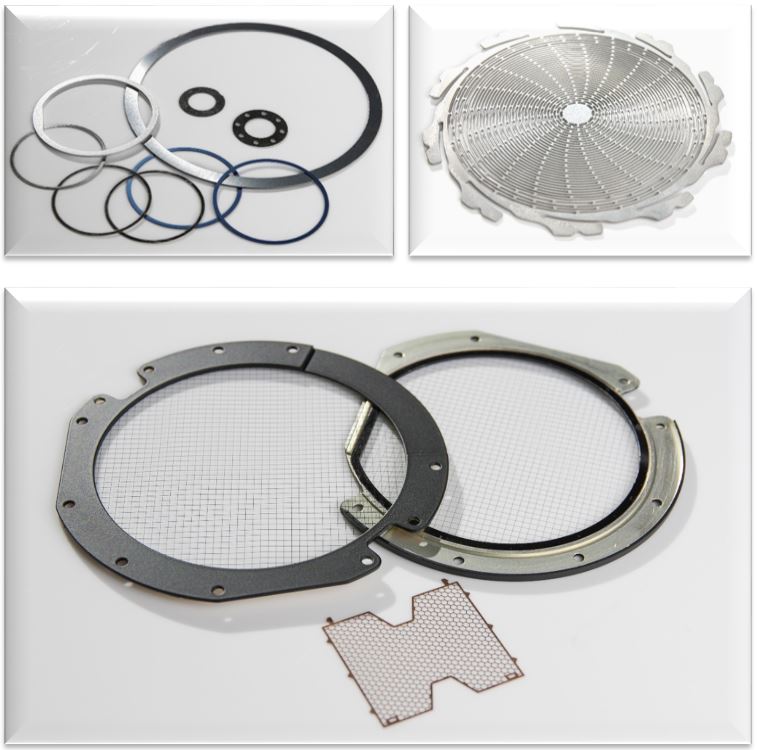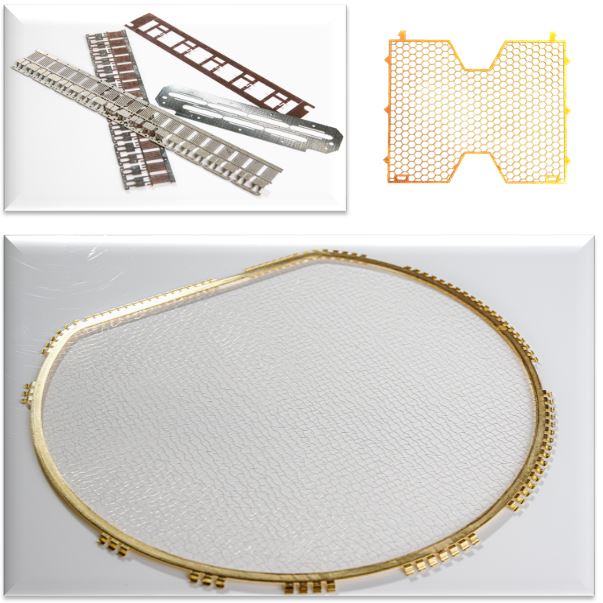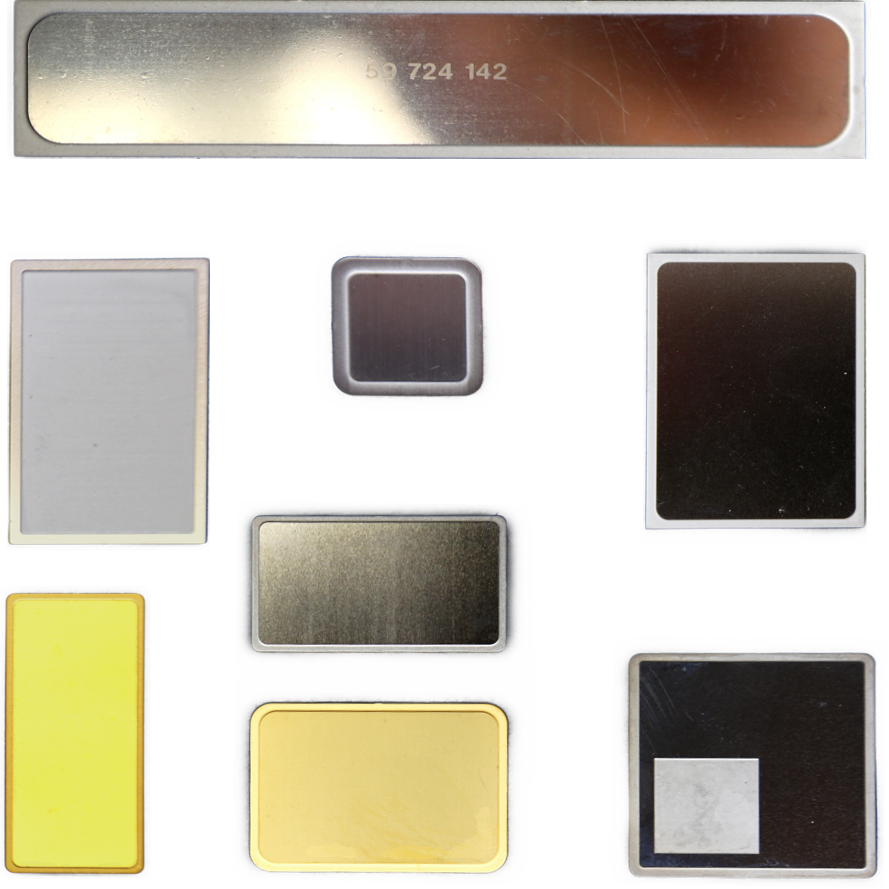Chemical and electrochemical etching
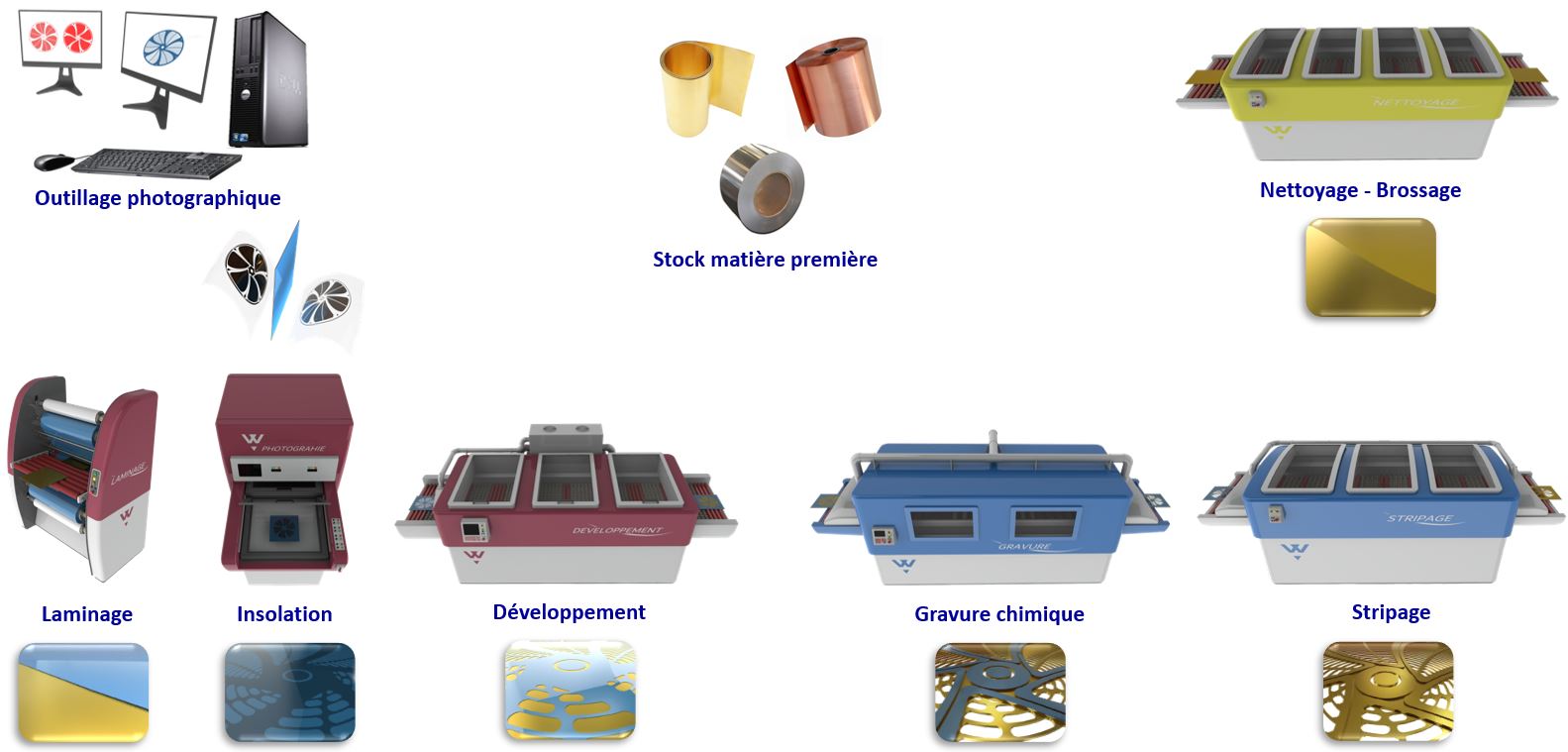
Process
Chemical etching is a method that allows the machining of a piece by chemically dissolving a metal plate, previously and locally protected by a resist. The basic process for electrochemical etching is similar, except for the use of a continuous electric current. It is used for metals resistant to purely chemical attack. The metal plate is coated with a photosensitive resin, the thinness of which (a few micrometers) allows for great precision in defining the image, obtained through exposure using photographic tools representing the piece to be manufactured. After development, the polymerized resin enables localized masking of the areas to be protected. Bare metal areas will be chemically attacked by spraying with an etching agent adapted to the metal to be dissolved. Etching on both sides asymmetrically enables the creation of formed shoulders or countersinks.
Advantages
These techniques allow cutting without burrs, deformation, or stress of highly precise parts up to thicknesses of 2 millimeters, in the following metals:
Nickel, steel, stainless steel, kovar, copper, brass, bronze, cupro-beryllium, inconel, aluminum, molybdenum, tungsten, titanium...
They also enable the production of complex-shaped parts within short time frames. They apply to almost all metals and have no influence on material characteristics. The affordable cost of tooling enables the production of prototypes at a competitive cost.
Advantages of Chemical Etching

Cutting without burrs, deformation, or stress of highly precise parts up to 2 millimeters in thickness
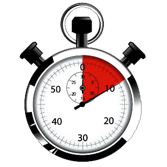
Production of complex-shaped parts within short time frames

Techniques applying to almost all metals and having no influence on material characteristics

Low tooling cost enabling the production of prototypes at a competitive cost
